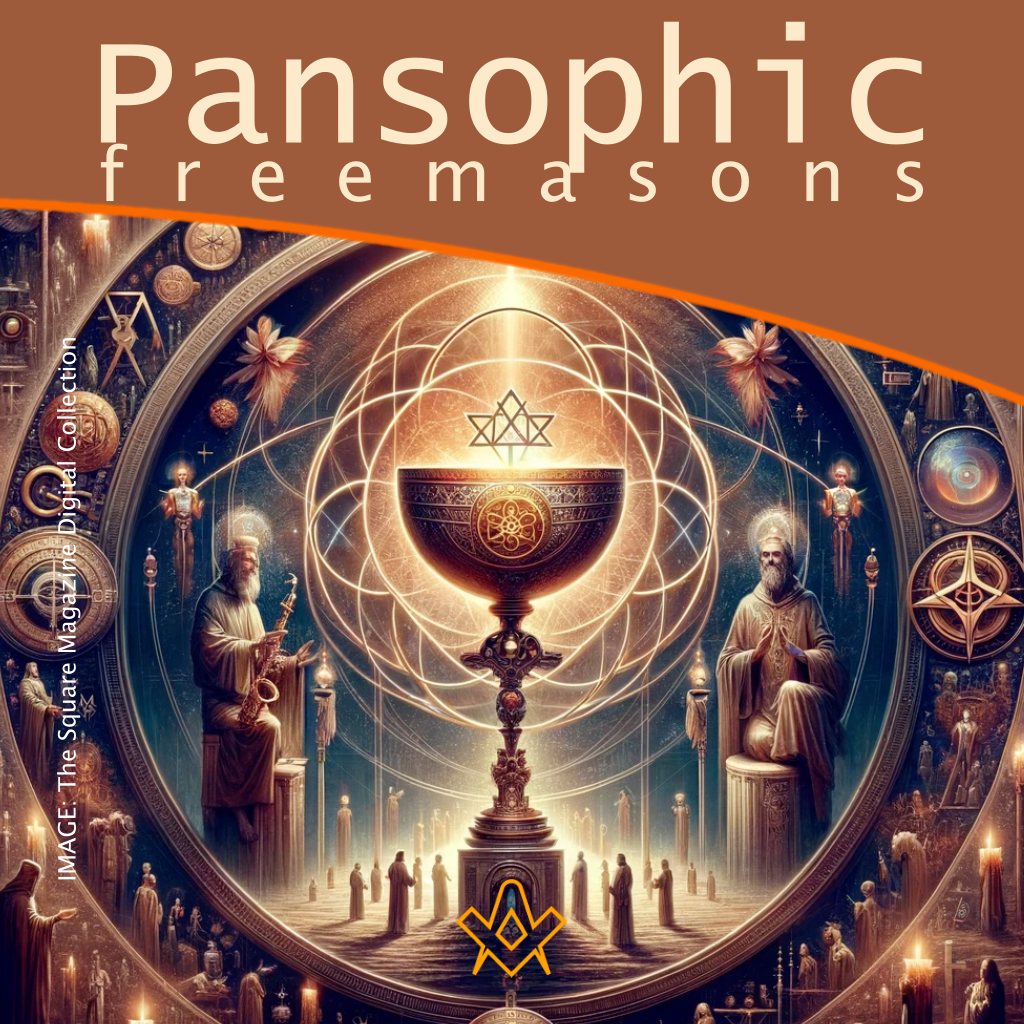Unveil the secrets of Pansophic Freemasonry, a transformative journey through the ancient mystical traditions.
Delve into the sacred realms of Rosicrucianism, Templar wisdom, Kabbalah, Gnosticism, and more. Discover the Graal, the sacred Grail that connects all esoteric paths.
Embrace a holistic spiritual quest that reveals the profound mysteries of self and the universe.
Pansophism: The Pursuit of Universal Knowledge in Education
John Amos Comenius and His Pansophic Vision
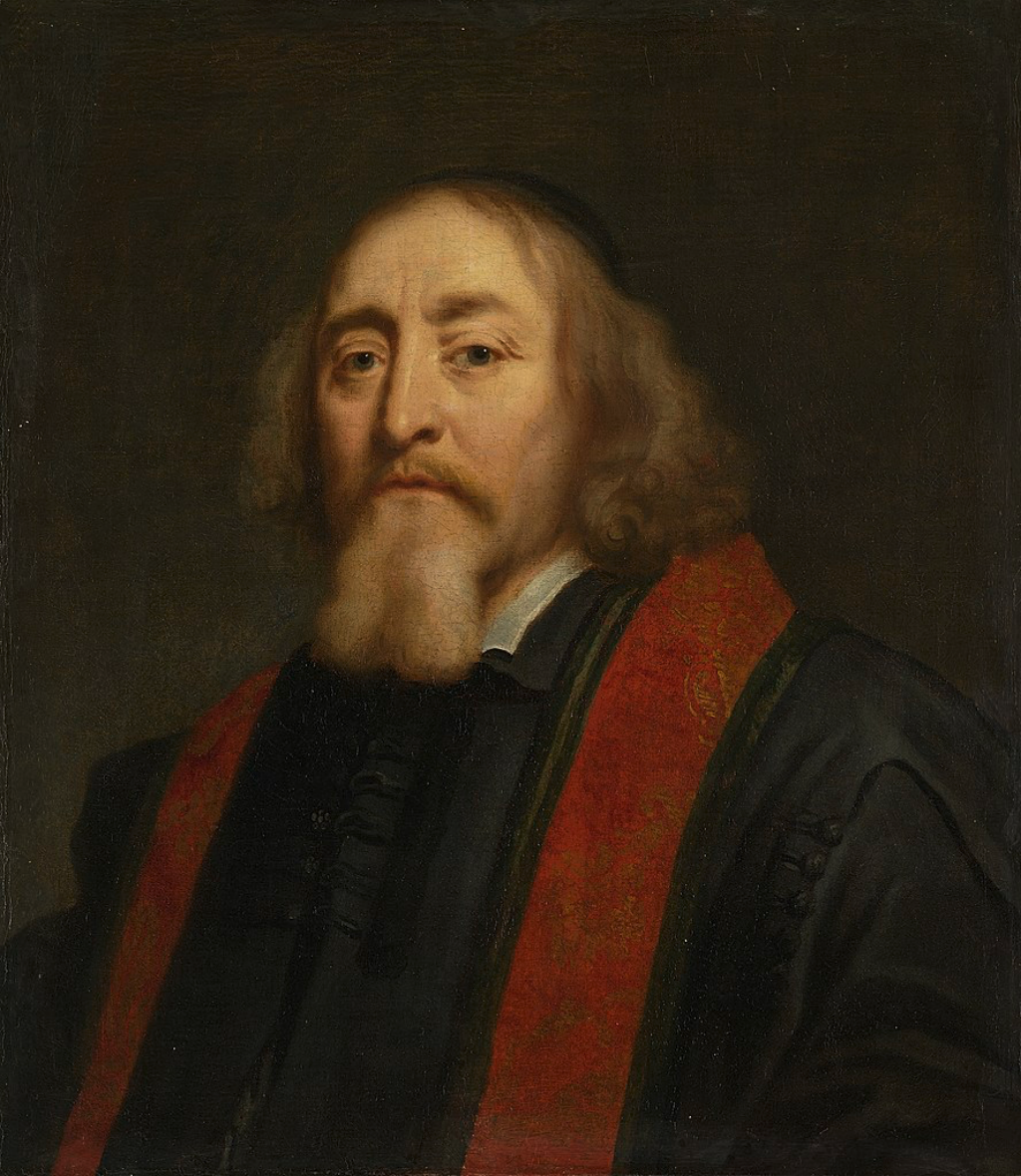
Jan Amos Comenius (Komensky) (1592-1670). Tsjechisch humanist en pedagoog. Als voorganger van de Moravische of Boheemse Broedergemeente verdreven en sedert 1656 gevestigd te Amsterdam Rijksmuseum
IMAGE LINKED: wikimedia Attribution 4.0 International (CC BY 4.0)
Pansophism, a term derived from the Greek words “pan” (meaning “all”) and “sophia” (meaning “wisdom”), is a pedagogical philosophy aimed at achieving a comprehensive understanding of the divine order of things.
The concept was introduced by the Czech educator John Amos Comenius in the 17th century. Comenius, considered the father of modern education, sought to develop a system whereby everyone would have access to all human knowledge by providing universal education.
His pansophic principle emphasizes that everything should be taught to everyone, or in his own words in the “Great Didactic,” “to all men and from all points of view.” This idea serves as a foundation for his educational system and is an extension of the concept of universal education (also known as Characteristica universalis).
Pansophism in Comenius’s Educational System
1. Pansophic Literature and the Organization of Knowledge
Comenius’s interest in pansophism emerged from his affinity for Sir Francis Bacon’s organization of human knowledge. He endorsed the encyclopedic or pansophic movement, which aimed to gather and impart all available knowledge. His book “Pansophiae prodromus” (1639) was published in London and was followed by “Pansophiae diatyposis.”
2. Pansophic College: An Academic Institute for Universal Knowledge
Comenius envisioned the establishment of a Pansophic College, a precursor to modern academic institutes. His treatise “Via lucis,” written in 1641/2 while in London, detailed his plans for this institute. However, due to the outbreak of the English Civil War, he had to abandon the project, and the work was only published in Amsterdam in 1668.
3. Educating the Whole Person: The Role of Pansophism in Teaching
Comenius believed that in addition to enhancing knowledge, pansophism could lead to personal improvements and greater understanding of oneself and the world. By teaching a wide variety of subjects, disciplines, and perspectives through his pansophic approach, Comenius aimed to cultivate better-rounded individuals.
Pansophism’s Impact on Modern Education
1. The Emergence of Encyclopedic Knowledge
The pansophic movement significantly influenced the idea of encyclopedic education. Encyclopedias emerged as an essential tool for assembling and disseminating knowledge, making it more accessible to the general public.
Pansophism’s core principle – that knowledge should be made available to all – inspired subsequent generations of educators and scholars who contributed to the development of comprehensive encyclopedia sets, like the well-known Encyclopédie by Denis Diderot and Jean le Rond d’Alembert.
2. Universal Education: A Foundation for Modern Schooling
Comenius’s concept of universal education, which is an essential element of his pansophic principles, continues to impact current educational systems worldwide. In many countries, education is now provided equally to all citizens, regardless of their social or economic status.
The United Nations also emphasizes the importance of education in sustainable development, with quality education being one of the primary goals in the global Sustainable Development Goals (SDGs).
3. The Influence of Pansophism on Interdisciplinary Studies
The concept of providing a diverse and universal education to teach “to all men and from all points of view” has also influenced the rise of interdisciplinary studies in modern academia.
By promoting the understanding of connections and relationships between various disciplines, pansophism contributed to broader, more comprehensive, and dynamic methods of teaching and learning.
The Continuing Relevance of Pansophism in the Age of Information
As the volume of information and knowledge continues to grow at an astounding pace, the relevance of pansophism is more significant than ever. Educators, scholars, and leaders must increasingly emphasize the importance of accessible and comprehensive education.
1. Embracing Technology for Pansophic Education
The rise of digital technology and the internet has created unprecedented opportunities for making knowledge widely available. The internet functions as a massive encyclopedia, where users can access a wealth of information on various subjects instantly, making the pursuit of pansophic ideals more feasible.
2. Fostering Critical Thinking and Analytical Perspectives
With readily available information, the focus of education should shift from merely acquiring knowledge to developing critical thinking and analytical skills. Pansophism’s principles support this shift, emphasizing the need for balanced and well-rounded education to help individuals excel in a fast-changing world.
3. Challenges of Information Overload and Digital Illiteracy
While the age of information bears vast potential, it also presents challenges such as information overload and digital illiteracy. The principles of pansophism can guide us in overcoming these challenges by encouraging comprehensive and adaptable education that prioritizes critical thinking and responsible information consumption.
In conclusion, pansophism, as proposed by John Amos Comenius, remains an essential and relevant concept in modern education.
By adopting its core principles, the pursuit of universal knowledge and personal development becomes attainable in an increasingly complex and interconnected world.
Embracing the powerful combination of pansophic ideals with modern technology can pave the way for a more inclusive, informed, and responsible global society.
The Life and Influence of John Amos Comenius
Early Life and Education
John Amos Comenius was born in 1592 in Moravia, which is a part of the present-day Czech Republic. He came from a family that belonged to the Moravian Brethren, a pre-Reformation Protestant denomination, and he would later become one of its leaders.
Comenius faced many challenges during his early years, including the death of his parents and two sisters when he was still a child.
Due to these circumstances, Comenius began his formal education at the age of 16, attending the Latin school in Přerov and later studying at the Herborn Academy and the University of Heidelberg.
Here, he was exposed to many of the educational reforms and ideas that would later shape his own pedagogical theories.
Career Beginnings and Achievements
Comenius started his career in education as a teacher, first working as a rector at a school in Přerov, and then as pastor and rector at the church in Fulnek.
However, his life took a dramatic turn due to religious persecution, forcing him to leave his homeland in 1627, and embark on a journey across Europe.
Despite facing many challenges, Comenius continued to develop and apply his ideas on education, the most significant of which was the concept of universal education. He produced the groundbreaking book, Janua linguarum reserata, or The Gate of Languages Unlocked, allowing him to gain prominence in the field.
Contributions to Education
As one of the earliest champions of universal education, John Amos Comenius is considered to be the father of modern education. He introduced many novel ideas and innovations, some of which are still prevalent in education today:
1. Pictorial textbooks: Comenius believed in creating textbooks with images and illustrations to better engage students and facilitate learning.
2. Native languages: He promoted the use of native languages in education, as opposed to relying solely on Latin which was the norm during his time.
3. Gradual development: Comenius emphasized teaching based on the gradual development of concepts, moving from simple to more complex ideas.
4. Lifelong learning: He encouraged continuous learning, with a focus on logical thinking and reasoning.
5. Equal opportunity: Comenius believed in providing equal educational opportunities to all, regardless of their social and economic background.
6. Education for women: He was one of the first to advocate for the education of women, highlighting the importance of educating both genders.
Comenius and Pansophism
In addition to his direct contributions to the field of education, John Amos Comenius also played a significant role in the development of the encyclopedic or pansophic movement of the seventeenth century.
This movement aimed to organize and consolidate human knowledge in a way that was accessible and easily understandable for everyone.
Comenius published his _Pansophiæ Prodromus_ in 1639, outlining his vision of a comprehensive system of human knowledge. He also attempted to create a language in which it would be impossible to express false statements.
Although many of his pansophic ideas remained incomplete or unrealized, they influenced the development of encyclopedias and systematic approaches to knowledge organization that followed.
Peripatetic Life and Impact Across Europe
John Amos Comenius led a life marked by constant movement and interaction with various European countries, such as Sweden, Poland, England, and the Netherlands.
This allowed him to influence the education systems and policies of many nations, actively participating in developing and implementing educational reforms.
In 1641, for example, Comenius was invited to England by the English Parliament to join a commission tasked with the reformation of public education. Although the English Civil War disrupted this project, his ideas still managed to inspire later generations of English educators.
Legacy and Significance
John Amos Comenius passed away in Amsterdam in 1670, leaving behind a rich legacy in the fields of education and knowledge organization.
His ideas and innovations laid the groundwork for modern education systems, while his pansophic vision inspired new ways of understanding the world.
Despite his various setbacks and challenges, Comenius managed to overcome adversity and make an indelible mark on the history of education, ensuring that his ideas continue to influence and inspire educators around the world to this day.
In conclusion, John Amos Comenius was a visionary philosopher, pedagogue, and theologian who had a profound influence on the development of modern education systems.
His innovative ideas, such as the use of native languages, the establishment of equal opportunities, and the integration of pictorial textbooks, ushered in a new era in the field of education.
As the father of modern education, his ideals and contributions continue to guide and shape educational practices today, testifying to the enduring significance of his work.
An In-Depth Analysis of Pansophic Freemasonry
Freemasonry, as a fraternal organization that traces its origins to the medieval stonemason guilds, has captivated the interest and curiosity of many for centuries.
Throughout its long history, various branches, or obediences, have sprung up, each with its own goals, practices, and traditions.
One such intriguing and lesser-known obedience is that of Pansophic Freemasonry. By exploring its missions, structure, and unique attributes, this article aims to provide a comprehensive understanding of Pansophic Freemasonry for those interested in learning more about this fascinating spiritual tradition.
Pansophic Freemasonry: A Blend of Esoteric Traditions
Pansophic Freemasonry stands apart from other Masonic obediences due to its blending of various esoteric spiritual and initiatic degrees that hold their origins in the spiritual schools of Rosicrucian, Templar, Kabbalistic, Gnostic, and other esoteric European traditions, collectively known as the Graal or sacred Grail.
This holistic approach to spirituality makes Pansophic Freemasonry an attractive path for those seeking a more profound understanding of themselves and the universe.
A Freemasonry for Both Men and Women
While other branches of Freemasonry may only include men or have separate branches for women, Pansophic Freemasonry embraces the concept of having men and women participate together as equals.
This makes it a more inclusive and representative Masonic obedience, emphasizing the importance of unity and collaboration.
Structure and Governance
Operating under various charters and warrants, Pansophic Freemasonry is divided into different modalities: Local Conventicles, Local Lodges, and Grand Lodge #1 St. Germain.
This structure enables members to make progress and participate in their spiritual journey through both local and centralized management.
Membership in Pansophic Freemasonry is kept strictly confidential to protect participating members from any potential conflicts with their affiliations in other Masonic obediences.
Degrees and Membership Advancement
In line with its esoteric traditions, Pansophic Freemasonry incorporates several initiatic paths. To progress through the degrees, members are required to undertake a specific course of study and practice in at least two paths.
Blue Lodge rituals, adopted from the French alchemical Rites Moderne, are the regular meetings through which members are initiated as Pansophic Apprentices, passed as Fellow Craft, and raised as Pansophic Knight-Master.
The Royal Arch Degree is reserved for Grand Masters, Lodge Masters, and Past Masters, who may then progress to the higher degrees of Memphis-Misraim within a Virtual Lodge under the guidance of a qualified Royal Arch Knight- or Dame-Master.
Recognizing Credentials from Other Obediences
Pansophic Freemasonry recognizes and accepts credentials and degree-work from various Masonic and Co-Masonic obediences, ensuring that it remains an inclusive and open-minded spiritual community.
The Importance of Masonic Secrecy
As with other branches of Freemasonry, Pansophic Freemasonry places great importance on the need for Masonic secrecy.
Secrecy is not only about keeping specific signs, tokens, grips, and words confidential but also about respecting the intimate spiritual connections that exist between initiates.
Pansophic Freemasonry replaces the conventional blood oaths with promises, emphasizing the importance of personal integrity and honor in maintaining the sanctity of Masonic secrecy.
The Allure of Pansophic Freemasonry
Pansophic Freemasonry offers a unique blend of esoteric spiritual traditions, a more inclusive and egalitarian approach, and a strong emphasis on personal growth and spiritual development.
Its analytical perspective on the spiritual journey encourages members to delve deeper into their own understanding of themselves and the universe around them.
In conclusion, Pansophic Freemasonry represents a fascinating and lesser-explored branch of Freemasonry that may hold great appeal for individuals seeking a profound and holistic spiritual path. By embracing an inclusive, unified approach, it offers a chance for men and women from varied backgrounds to come together and embark on their own personal journey of growth, wisdom, and enlightenment.
Introduction to the Great Didactic
John Amos Comenius and the Birth of Modern Pedagogy
The “Great Didactic“, known in Latin as “Didactica Magna“, is a groundbreaking work in the field of education written by Czech philosopher, pedagogue, and theologian, John Amos Comenius.
This monumental text, first published in 1657, comes from a period in which Comenius penned some of his most influential works between 1627 and 1638. At its core, the Great Didactic is a comprehensive and systematic approach to teaching that has played an important role in the development of modern pedagogy.
Comenius, a philosophical visionary with a profound understanding of the human condition, sought to lay the foundation for a pedagogical framework that could facilitate the holistic growth and development of every individual. The Great Didactic is a brilliant and ambitious work that has left an indelible mark on the world of education.
The Philosophy and Aims of the Great Didactic
The Great Didactic is a seminal work in the field of pedagogy, or the science and art of teaching, which advocates for a well-rounded, inclusive, and coherent educational system.
Comenius’s magnum opus positions itself as a “didactic of life” and aspires to “teach everyone everything completely” by considering the “whole” of each individual (Latin: omnes omnia omnino excoli). This lofty claim is rooted in the belief that only an educated person can truly be considered a complete human being.
The optimistic anthropology at the heart of the Great Didactic highlights the inherent goodness and potential in every person, and emphasizes that this potential can and should be developed through proper education.
In doing so, the text offers essential guidance on creating a pleasant learning atmosphere that fosters high levels of student achievement.
The Great Didactic places a great deal of importance on the interconnectedness of education throughout a person’s life. Comenius advocates for a coherent system of schools consisting of kindergarten, elementary school, secondary school, college, and university—mirroring the well-established American education system.
This holistic approach to education is founded on the understanding that children have an innate desire for knowledge and goodness, as well as the belief that humankind can live in harmony through universal educational systems.
Furthermore, Comenius’s text champions the idea of pansophism — the pursuit of universal knowledge by teaching all things to all people from all perspectives. By embracing pansophism, the Great Didactic delivers a comprehensive and accessible roadmap to students’ educational journeys.
Nature, Society, and the Role of Education in the Great Didactic
One of the most distinctive and forward-thinking aspects of the Great Didactic is its focus on the connection between education and nature.
Comenius stresses the importance of giving students ample opportunities to interact with the natural world outside of school, as well as weaving the elements of the world around them into their education in a systematic and relevant manner.
By doing so, Comenius effectively establishes a clear bond between the classroom and the broader context of life.
Moreover, the Great Didactic envisions a society in which all individuals have access to education—regardless of their socioeconomic background or social standing. Comenius insists that children from all walks of life, be they “…rich or poor, in all cities and towns, villages and hamlets, should be sent to school.”.
This revolutionary outlook on education is indicative of his commitment to inclusivity and social justice.
The Lasting Impact of the Great Didactic
The Great Didactic has undeniably left a significant and lasting impact on the field of education. Its approach to teaching, which advocates for a systematic exploration of worldly knowledge in tandem with life experiences, remains influential to this day.
The Great Didactic’s emphasis on inclusivity, social justice, and holistic development has had a profound influence on future generations of educators and thinkers.
Conclusion: The Unwavering Relevance of the Great Didactic
John Amos Comenius’s Great Didactic is, without question, a cornerstone of modern pedagogy.
Its dedication to the comprehensive development of each individual, its focus on promoting universal harmony through universal education, and its revolutionary ideas regarding the accessibility and inclusivity of education make it a work of timeless relevance.
To properly understand and appreciate the history and development of education, one must delve into the pages of the Great Didactic and explore the wisdom and insights that Comenius so eloquently shared with the world.
Article by: Margaret S.

Margaret S. is a retired lecturer and devotes much of her time to theological and philosophical writing.
She was made a Freemason in the International Order of Freemasonry for Men and Women - Le Droit Humain.
(Margaret S. is her pen name for all her masonic papers)
Recent Articles: Esoteric series
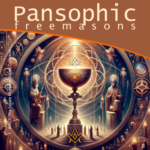 Unveil the secrets of Pansophic Freemasonry, a transformative journey through the ancient mystical traditions. Delve into the sacred realms of Rosicrucianism, Templar wisdom, Kabbalah, Gnosticism, and more. Discover the Graal, the sacred Grail that connects all esoteric paths. Embrace a holistic spiritual quest that reveals the profound mysteries of self and the universe. |
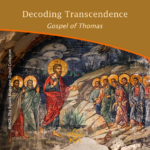 Dive into a spiritual journey where self-awareness is the key to enlightenment. The Gospel of Thomas and Masonic teachings converge on the profound truth that the path to transcendent wisdom lies within us. Embrace a diversified understanding of spirituality, emphasizing introspection as the gateway to a universally respected enlightenment. Explore, understand, transcend. |
 Philosophy the Science of Estimating Values Philosophy is the science of estimating values. The superiority of any state or substance over another is determined by philosophy. By assigning a position of primary importance to what remains when all that is secondary has been removed, philosophy thus becomes the true index of priority or emphasis in the realm of speculative thought. The mission of philosophy a priori is to establish the relation of manifested things to their invisible ultimate cause or nature. |
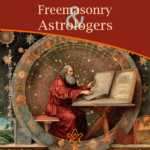 Unlocking the Mysteries: The Surprising Connection Between Freemasonry and Astrologers Revealed! Delve into the intriguing world of Freemasonry and explore its ties to astrological practices. Discover how these two distinct realms intersect, offering a fascinating glimpse into the esoteric interests of some Freemasons. Uncover the hidden links and unravel the enigmatic bond between Freemasonry and astrologers! |
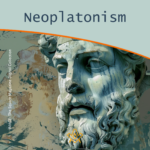 Neoplatonism, a philosophy with profound influence from the 3rd to the 6th century, merges Platonic ideals with Eastern thought, shaping Western and Middle-Eastern philosophy for two millennia. It emphasizes the unity of the individual with the supreme 'One', blending philosophy with theology and impacting major religious and philosophical movements, including Christianity and Islam. |
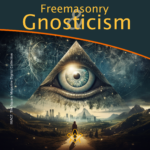 The enigmatic allure of Freemasonry's ancient rituals and Gnosticism's search for hidden knowledge capture the human spirit's endless quest for enlightenment. Between the stonemason's square and the Gnostic's divine spark lies a tantalizing intersection of philosophy, spirituality, and the pursuit of esoteric wisdom. Both traditions beckon with the promise of deeper understanding and moral elevation, inviting those who are drawn to unravel the tapestries of symbols and allegories. Whether through the fellowship of the lodge or the introspective journey of the soul, the paths of Freemasonry and Gnosticism represent a yearning to connect with something greater than ourselves—an impulse as old as time and as compelling as the mysteries they guard. |
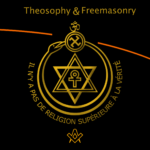 Embark on a journey through time and spirituality with our in-depth exploration of the Theosophical Society's Seal. This ancient emblem, rich with symbols, bridges humanity with the cosmos, echoing through the world's great faiths and diverse cultures. Our paper delves into the six mystical symbols, untangling their profound meanings and tracing their presence in historic art worldwide. Unaffiliated with worldly movements, these symbols open a window to esoteric wisdom. We also probe potential parallels with Freemasonry, seeking threads that might connect these storied organizations. Join us in unveiling the universal language of the spirit encoded within this enigmatic Seal. |
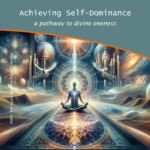 Discover the pathway to divine oneness through the concept of self-dominance. This thought-provoking essay explores the profound connection between self-control, spiritual growth, and achieving unity with the divine essence. With an interdisciplinary approach, it offers practical steps towards expanding consciousness and deepening our understanding of the divine. |
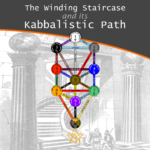 The Winding Staircase and its Kabbalistic Path The Winding Staircase in freemasonry is a renowned symbol of enlightenment. In this article, we explore its connection to Kabbalistic thought and how it mirrors the inner growth of a candidate as he progresses throughout his Masonic journey. From faith and discipline in Binah, to strength and discernment in Geburah, and finally to victory and emotional intuition in Netzach, each step represents a crucial aspect of personal development. Join us as we delve into the esoteric meanings of this powerful symbol. |
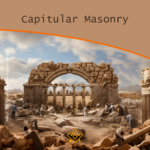 Unravel the mystic origins of Capitular Masonry, a secretive Freemasonry branch. Explore its evolution, symbolic degrees, and the Royal Arch's mysteries. Discover the Keystone's significance in this enlightening journey through Masonic wisdom, culminating in the ethereal Holy Royal Arch. |
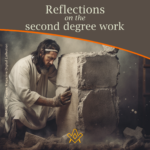 Reflections on the Second Degree Work Bro. Draško Miletić offers his reflections on his Second Degree Work – using metaphor, allegory and symbolism to understand the challenges we face as a Fellow Craft Mason to perfect the rough ashlar. |
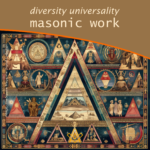 Diversity and Universality of Masonic Work Explore the rich tapestry of Masonic work, a testament to diversity and universality. Uncover its evolution through the 18th century, from the stabilization of Symbolic Freemasonry to the advent of Scottish rite and the birth of Great Continental Rites. Dive into this fascinating journey of Masonic systems, a unique blend of tradition and innovation. Antonio Jorge explores the diversity and universality of Masonic Work |
 Nonsense as a Factor in Soul Growth Although written 100 years ago, this article on retaining humour as a means of self-development and soul growth is as pertinent today as it was then! Let us remember the words of an ancient philosopher who said, when referring to the court jester of a king, “It takes the brightest man in all the land to make the greatest fool.” |
 Freemasonry: The Robe of Blue and Gold Three Fates weave this living garment and man himself is the creator of his fates. The triple thread of thought, action, and desire binds him when he enters into the sacred place or seeks admittance to the Lodge, but later this same cord is woven into the wedding garment whose purified folds shroud the sacred spark of his being. - Manly P Hall |
 By such a prudent and well regulated course of discipline as may best conduce to the preservation of your corporal and metal faculties in the fullest energy, thereby enabling you to exercise those talents wherewith god has blessed you to his glory and the welfare of your fellow creatures. |
 Jacob Ernst's 1870 treatise on the Philosophy of Freemasonry - The theory of Freemasonry is based upon the practice of virtuous principles, inculcating the highest standard of moral excellence. |
 Alchemy, like Freemasonry, has two aspects, material and spiritual; the lower aspect being looked upon by initiates as symbolic of the higher. “Gold” is used as a symbol of perfection and the earlier traces of Alchemy are philosophical. A Lecture read before the Albert Edward Rose Croix Chapter No. 87 in 1949. by Ill. Bro. S. H. Perry 32° |
 The spirit of the Renaissance is long gone and today's globalized and hesitant man, no matter ideology and confession, is the one that is deprived of resoluteness, of decision making, the one whose opinion doesn't matter. Article by Draško Miletić, |
 A Mason's Work in the First Degree Every Mason's experiences are unique - here writer and artist Draško Miletić shares insights from his First Degree Work. |
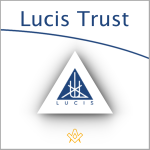 Initiation and the Lucis Trust The approach of the Lucis Trust to initiation may differ slightly to other Western Esoteric systems and Freemasonry, but the foundation of training for the neophyte to build good moral character and act in useful service to humanity is universal. |
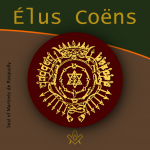 Who were the mysterious 18th century Élus Coëns – a.k.a The Order of Knight-Masons Elect Priests of the Universe – and why did they influence so many other esoteric and para-Masonic Orders? |
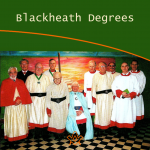 Bro. Chris Hatton gives us his personal reflections on the history of the 'house at Blackheath and the Blackheath Orders', in this wonderful tribute to Andrew Stephenson, a remarkable man and Mason. |
 Book Review - Cagliostro the Unknown Master The book review of the Cagliostro the Unknown Master, by the Editor of the book |
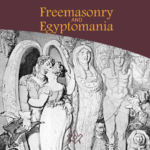 We explore fascinating and somewhat contentious historical interpretations that Freemasonry originated in ancient Egypt. |
 Is Freemasonry esoteric? Yes, no, maybe! |
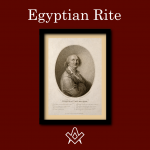 Egyptian Freemasonry, founder Cagliostro was famed throughout eighteenth century Europe for his reputation as a healer and alchemist |
masonic knowledge
to be a better citizen of the world
share the square with two brothers

click image to open email app on mobile device
